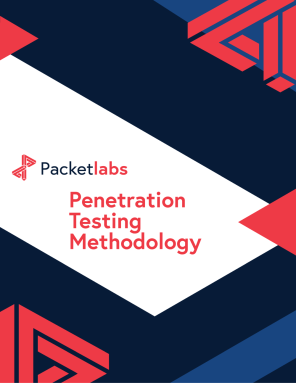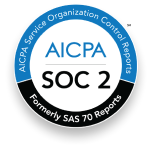Services
Attack Surface Penetration Testing
Go beyond on-premises infrastructure with Attack Surface Penetration Testing.
Attack Surface Penetration Testing identifies sensitive data in public places and is a critical aspect of cybersecurity and threat intelligence. It involves the search and discovery of confidential information or vulnerabilities that could be exploited by malicious actors to infiltrate your organization.
Contact Us
Find Risks Before They Become Threats
The result? Proactive, wide-ranging remediation opportunities for both potential and existing threats.
Services
Attack Surface Penetration Testing
Go beyond on-premises infrastructure with Attack Surface Penetration Testing.
Attack Surface Penetration Testing identifies sensitive data in public places and is a critical aspect of cybersecurity and threat intelligence. It involves the search and discovery of confidential information or vulnerabilities that could be exploited by malicious actors to infiltrate your organization.
The result? Proactive, wide-ranging remediation opportunities for both potential and existing threats.
Contact Us
Find Risks Before They Become Threats
Service Highlights
Avoid Becoming Part of the Statistic
On average, companies take about 197 days to identify and 69 days to contain a breach, according to IBM–and, with the average cost of a cyberattack having risen by 15% over the past three years to now sit at USD $4.45 million, proactive penetration testing has never been more critical.

The Packetlabs Commitment

Best-in-Class Methodologies
Our best-in-class Infrastructure Pentesting methodologies (derived from the SANS Pentest Methodology, the MITRE ATT&CK framework for enterprises, and NIST SP800-115 to ensure compliance with the majority of regulatory requirements) are suited to any type of infrastructure including: cloud and hybrid environments, software/ platform as a service (SaaS/ PaaS), and infrastructure as code.
CREST Certified
Packetlabs is CREST-certified. A CREST certification is a globally-recognized accreditation issued by CREST (the Council of Registered Security Testers). As an international governing membership body representing the global cybersecurity community, CREST certifications are lauded as the best of the best by the cybersecurity industry regarding the indication of knowledge, skills, and competence.
100% Success Rate
With over 12 years in the industry serving numerous industries across North America, our team has never come across an infrastructure we couldn’t breach. Where possible, our team also pivots to other in-scope systems to further fortify your security posture–and thereby verify the effectiveness of your organization’s endpoint defenses in order to better inform Employee Awareness Programs and future cybersecurity roadmaps.

Remote and On-Site Penetration Testing
Packetlabs is made up of over 30 OSCP-minimum ethical hackers. We offer both remote testing solutions (allowing our experts to deliver infrastructure assessments remotely without the inconveniences typically associated with an on-site penetration test) and on-site testing in order to be able to scale the level of support and resources desired for personnel.
Why Invest in Attack Surface Penetration Testing?
The Identification of Both Digital and Physical Attack Surfaces
Fine-tune your organization's existing cybersecurity techniques, alerts, and responses to maximize protection of your attack surfaces (and enhance the efficacy of future cybersecurity roadmaps for your organization.)
Asset Identification and Risk Assessment
Not all assets are created equal. Some hold sensitive customer data, while others might be less critical public-facing informational websites. Attack Surface Penetration Testing involves classifying these assets based on their criticality and the risk they pose–and testing them from a threat actor’s perspective to determine higher priorities for remediation efforts
In-Depth, Expert-Driven Reporting
Reporting is the final phase in our methodology that involves summarizing identified findings, analyzing the results and performing root-cause analysis and drafting a high-level executive summary to outline key observations and business impact.
Maximize Vulnerability Identification
Identify vulnerabilities across search engines, historical website records, exposed endpoints, public code repositories, employee Internet activity, mail misconfigurations, and more via our partnership with Flare.io.
Resources

Penetration Testing Methodology
Our Penetration Security Testing methodology is derived from the SANS Pentest Methodology, the MITRE ATT&CK framework, and the NIST SP800-115 to uncover security gaps.
Download MethodologyRelated Posts

February 16 - Blog
Attack Surface Mapping for Proactive Cybersecurity
What is the Attack Surface and why does it matter? This article outlines the process of Attack Surface Mapping to ensure a comprehensive and proactive cybersecurity program.

July 18 - Blog
What Is Attack Surface Management (ASM)?
Attack surface management is a critical security process for identifying and mitigating potential risks associated with changes to your organization's attack surface.

November 09 - Blog
Attack Surface Management: What You Need to Know
Attack surface management (ASM) is a growing sector in the security space, so in this post, we’ll break down what it is and why it’s important to incorporate into your security program.

- Toronto | HQ
- 401 Bay Street, Suite 1600
- Toronto, Ontario, Canada
- M5H 2Y4
- San Francisco | HQ
- 580 California Street, 12th floor
- San Francisco, CA, USA
- 94104
© 2024 Packetlabs. All rights reserved.






